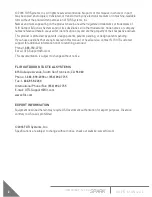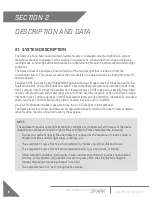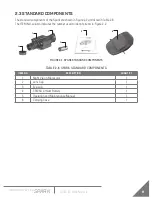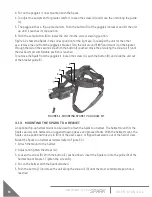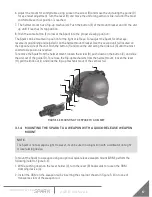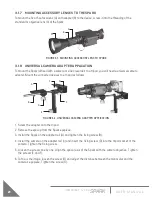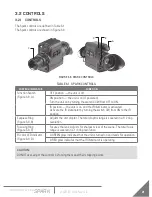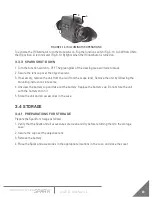
8
ARMASIGHT by FLIR
SPARK
U S E R M A N U A L
SECTION 2
DESCRIPTION AND DATA
2.1 SYSTEM DESCRIPTION
The Spark is a hand-held, head-mounted, helmet-mounted, or weapon-mounted night vision system
that allows the user to operate it while walking, firing weapons, conducting short-range surveillance,
reading maps, conducting vehicle maintenance, or administering first aid in both moonlight and starlight
conditions.
The Spark utilizes the principle of intensification of the residual light that is reflected from the
surrounding objects. The optical system of the unit consists of an objective lens, an intensifier tube (IT),
and an eyepiece.
Exclusive CORE (Ceramic Optical Ruggedized Engine) technology image intensifier tubes are used in the
Spark monoculars. While CORE does not contain a micro channel plate (and so by definition lands in the
Gen 1 category) that is where the parallels end. Instead of glass, CORE tubes use a specially formulated
ceramic compound fused with metal alloys similar to those used in production of Gen 2 and Gen 3 image
intensifier tubes. Further advances in CORE have almost removed edge distortion, dramatically increased
photo-sensitivity and most importantly, almost doubled resolution up to 70 lp/mm.
A built-in IR illuminator makes it possible to use the unit in low light or total darkness.
The Spark allows for vertical and fore-and-aft adjustment when mounted to the user’s head or helmet,
when focusing the lens, and when focusing the eyepiece.
NOTE:
The equipment requires some light (moonlight, starlight, etc.) to operate. Performance of the device
depends upon the level of ambient light in the environment. Please remember the following:
– The level of ambient light in the environment is reduced by the presence of clouds, shade, or
objects that block natural light (trees, buildings, etc.
– The equipment is less effective when operated in shadows and other darkened areas.
– The equipment is less effective when operated in rain, fog, sleet, snow, or smoke.
– Under starlight conditions, particularly in low-contrast environments such as snow-covered
territory, sandy deserts, large bodies of water or grassy hills, the visibility may degrade,
thereby disguising or masking changes in terrain.
– The equipment will not “see” through dense smoke.


